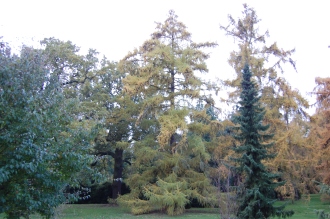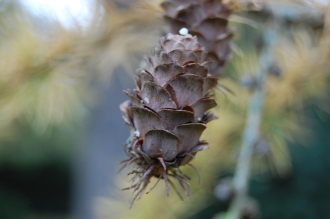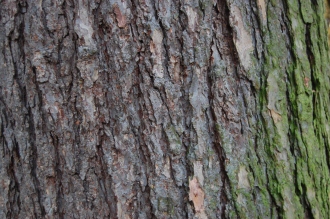Position: Full sun to light shade
Flowering period: Early spring
Soil: Moist, well drained
Eventual Height: 40m
Eventual Spread: 10m
Hardiness: 4a, 4b, 5a, 5b, 6a, 6b, 7a, 7b, 8a, 8b
Family: Pinaceae
Larix x eurolepis is a fast growing deciduous tree with a conical habit. Its light green leaves are needle like, up to 5cm long and appear in whorls. The turn orange/ brown in autumn before they fall. Its lower branches have a downward tendency. Its bark is grey/ brown with regular fissures. Its flowers are monoecious, its female flowers being small red/ purple rounded cones. Its fruit are erect cones and are up to 35mm long, they are initially green maturing to a grey/ black.
Larix x eurolepis, commonly known as the Dunkeld Larch or Hybrid Larch, is a cross between Larix decidua (European Larch) and Larix kaempferi (Japanese Larch) and was discovered in Dunkeld, Scotland in 1904.
The etymological root of the binomial name Larix is derived from the old Latin name for ‘Larch’. Eurolepis is derived from the Greek euros meaning ‘broad’ and lepis meaning ‘scales’.
The landscape architect may find Larix x eurolepis useful as a fast growing, large ornamental parkland tree with attractive autumn leaf colour.
Ecologically, Larix x eurolepis seed cones are attractive to birds.
Larix x eurolepis prefers moist, deep, well-drained soils. It tolerates most pH of soil. It will tolerate poor soils but will not tolerate badly drained soils.
Larix x eurolepis requires little maintenance.








So named because it was originally described as a hybrid of Larix europaea (synonym of L. decidua) and Larix leptolepis (synonym of L. Kaempferi)